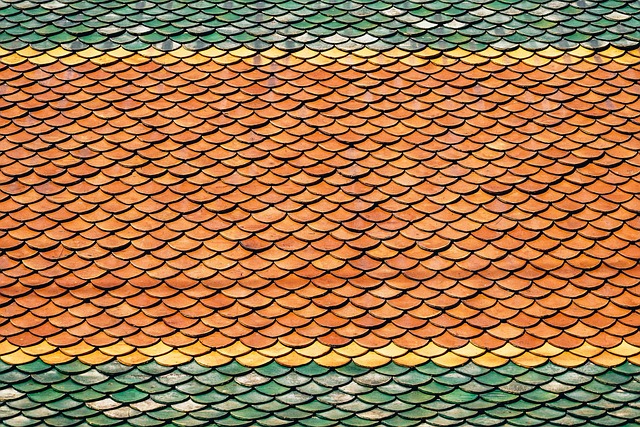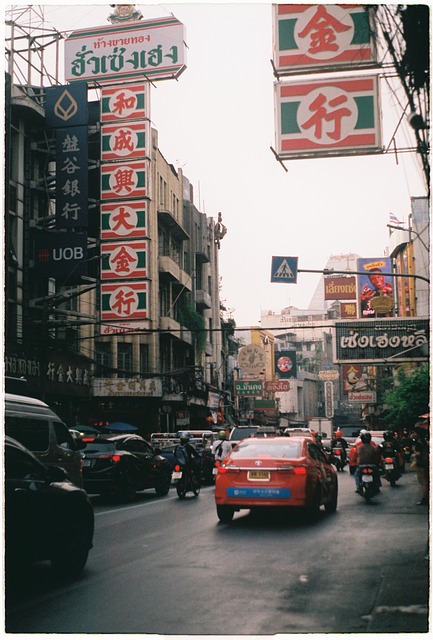Commercial roofing solutions are undergoing a significant green transformation, driven by environmental awareness and stricter regulations. Businesses can reduce their ecological footprint while lowering utility bills and maintenance costs through eco-friendly practices. Innovative options like recycled content roofs, cool roofs, green roofs, and living roofs integrate nature into urban settings. Energy-efficient technologies like solar panels and green roofing systems offer substantial cost savings and environmental benefits. Modern architects are incorporating high-performance insulation, reflective 'cool' roofs, and sustainable materials to enhance structural integrity and optimize energy efficiency. Case studies demonstrate the advantages of green commercial roofing solutions in reducing heat islands, improving aesthetics, providing insulation, and supporting local wildlife. The future of urban roofing includes smart systems with solar panels, wind turbines, and water harvesting technologies, along with durable, eco-friendly materials made from recycled materials. These trends aim to create sustainable, resilient, and visually appealing urban areas.
Sustainable Commercial Roofing Solutions are not just a trend but an essential step towards a greener future for our cities. With environmental and economic considerations at the forefront, businesses are increasingly opting for eco-friendly alternatives in commercial roofing. This article explores various aspects of this transformative shift, from understanding the impact of traditional roofing to discovering innovative designs and successful case studies. We delve into the potential of solar and green technologies while also considering future trends that are reshaping urban landscapes with sustainability as a cornerstone.
Understanding the Impact of Commercial Roofing: Environmental and Economic Considerations

Commercial roofing plays a significant role in shaping the sustainability narrative for buildings and urban environments. The environmental impact of traditional roofing materials is often overlooked, contributing to issues like waste generation, energy consumption, and greenhouse gas emissions. In today’s world, where businesses are increasingly conscious of their ecological footprint, understanding these implications is crucial when selecting commercial roofing solutions.
Beyond environmental concerns, there are economic considerations as well. Commercial roofing systems that incorporate sustainable practices can lead to long-term cost savings for businesses. Energy-efficient materials reduce utility bills, while durable and low-maintenance options minimize repair expenses. Embracing eco-friendly commercial roofing solutions not only benefits the planet but also contributes to a more prosperous and resilient built environment.
The Rise of Sustainable Roofing Materials: Eco-Friendly Alternatives for Commercial Properties

The roofing industry is experiencing a significant shift towards sustainability, driven by growing environmental consciousness and stricter regulations. Commercial property owners are increasingly seeking commercial roofing solutions that offer eco-friendly alternatives to traditional materials. This trend is not just a response to green initiatives but also a strategic move to reduce operational costs and enhance building performance.
Innovative manufacturers have risen to the challenge, developing a diverse range of sustainable roofing materials. These include recycled content roofs, which utilize post-consumer and post-industrial recycled materials, significantly reducing waste. Additionally, cool roofs are gaining popularity due to their ability to reflect sunlight, thereby lowering interior temperatures and decreasing energy consumption for cooling. Other options like green roofs and living roofs provide insulation, improve air quality, and create habitats for local wildlife, seamlessly integrating nature into urban landscapes.
Energy Efficiency in Commercial Roofs: Utilizing Solar and Green Technologies

Commercial roofing solutions that incorporate energy-efficient technologies are gaining traction as businesses seek to reduce operational costs and their environmental impact. One prominent approach is leveraging solar power, where photovoltaic (PV) panels are integrated into roof systems. These panels not only generate clean electricity but also serve as insulation, contributing to overall energy efficiency. Moreover, green roofing systems, featuring vegetative layers, offer additional benefits such as improved air quality, reduced urban heat island effects, and extended roof lifespan.
Such innovations form a crucial part of the move towards sustainable building practices, especially in commercial spaces. By adopting these technologies, businesses can significantly lower their carbon footprint while enjoying long-term savings on energy bills. As environmental regulations tighten, investing in efficient commercial roofing solutions becomes not just a smart choice but also a necessary step for any forward-thinking organization.
Design Innovations for Eco-Conscious Buildings: Integrating Sustainable Roofing into Modern Architecture

In the pursuit of eco-conscious buildings, design innovations in commercial roofing solutions have emerged as a key component for reducing environmental impact. Modern architects are increasingly integrating sustainable roofing materials and systems that not only meet structural requirements but also contribute to energy efficiency and environmental stewardship. These include high-performance insulation, cool roofs that reflect sunlight, and the use of renewable resources such as recycled metal and plant-based composites.
The integration of sustainable roofing practices into modern architecture goes beyond aesthetics. It involves strategic design choices that optimize natural light, reduce heat absorption, and lower carbon footprints. By embracing these innovations, commercial buildings can achieve remarkable energy savings, enhance their overall efficiency, and contribute to a greener, more sustainable built environment.
Case Studies: Successful Implementation of Green Commercial Roofing Solutions

Green commercial roofing solutions have gained significant traction in recent years, with numerous successful case studies showcasing their benefits. One notable example is the retrofitting of an aging city center building with a vibrant green roof. The project involved installing a deep-soil system that supports a diverse array of native plants, significantly reducing the building’s heat island effect. This transformation not only enhanced the aesthetics of the urban landscape but also provided insulation, improved air quality, and created habitats for local wildlife.
Another compelling case study highlights the implementation of a white reflective roof in a commercial warehouse. This innovative approach, aimed at mitigating urban heat islands, has led to substantial energy savings by reflecting sunlight instead of absorbing it. The project’s positive impact on the surrounding environment was evident through reduced cooling costs and improved local temperature regulation. These real-world applications underscore the effectiveness of sustainable commercial roofing solutions in promoting eco-friendly practices while offering practical benefits for businesses.
Future Trends in Sustainable Urban Roofing: Towards a Greener Cityscape

The future of urban roofing is looking greener as we embrace innovative and sustainable commercial roofing solutions. With a growing emphasis on environmental stewardship, cities worldwide are transforming into eco-friendly oases. One prominent trend is the integration of green roofs and vertical gardens, which offer numerous benefits beyond aesthetics. These living rooftops provide insulation, reduce the urban heat island effect, and create habitats for local wildlife. As technology advances, we can expect to see more smart roofing systems that incorporate solar panels, wind turbines, and water harvesting technologies, further minimizing a building’s carbon footprint.
Additionally, there is a rising demand for commercial roofing materials that are environmentally friendly and durable. Manufacturers are responding by developing recycled content roofing products, such as those made from reclaimed rubber, plastic, and metal. These materials not only divert waste from landfills but also offer long-lasting performance, reducing the need for frequent replacements. By adopting these future trends, urban areas can become more sustainable, resilient, and beautiful, setting a new standard for commercial roofing solutions.
